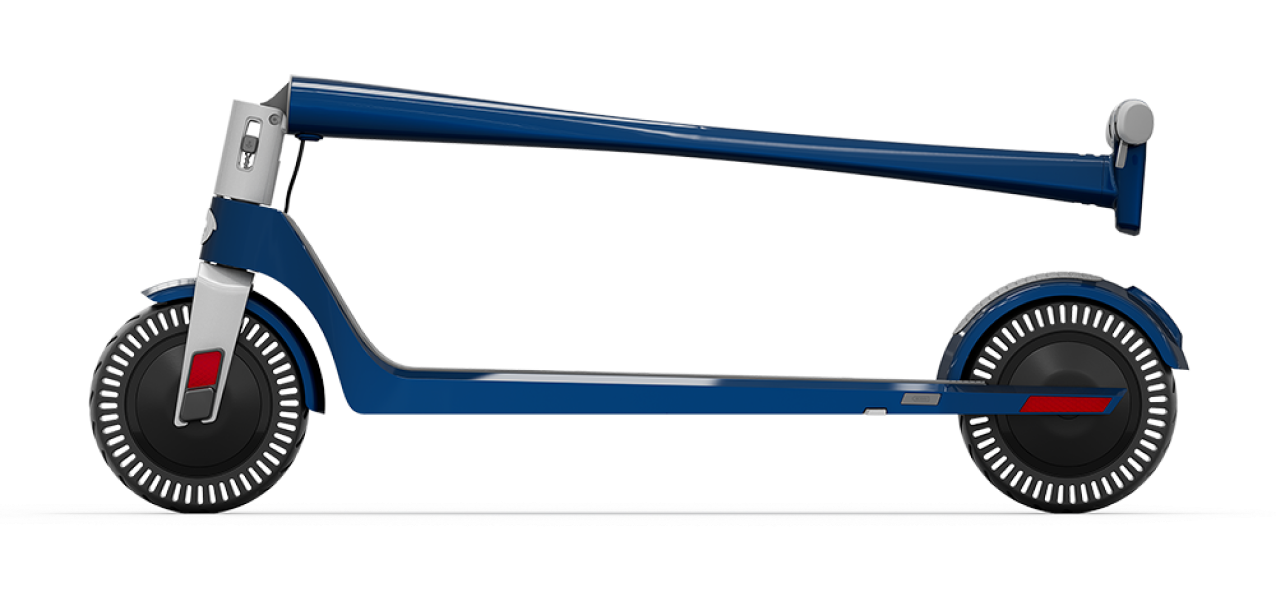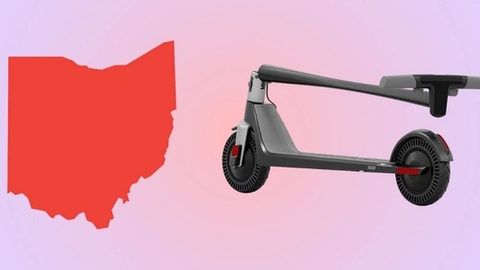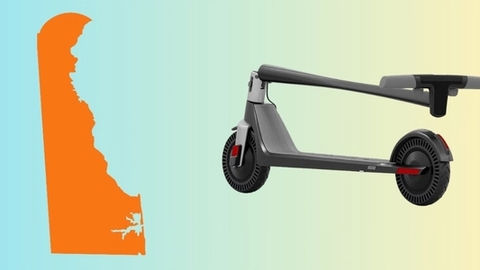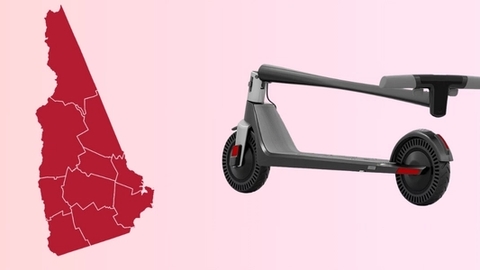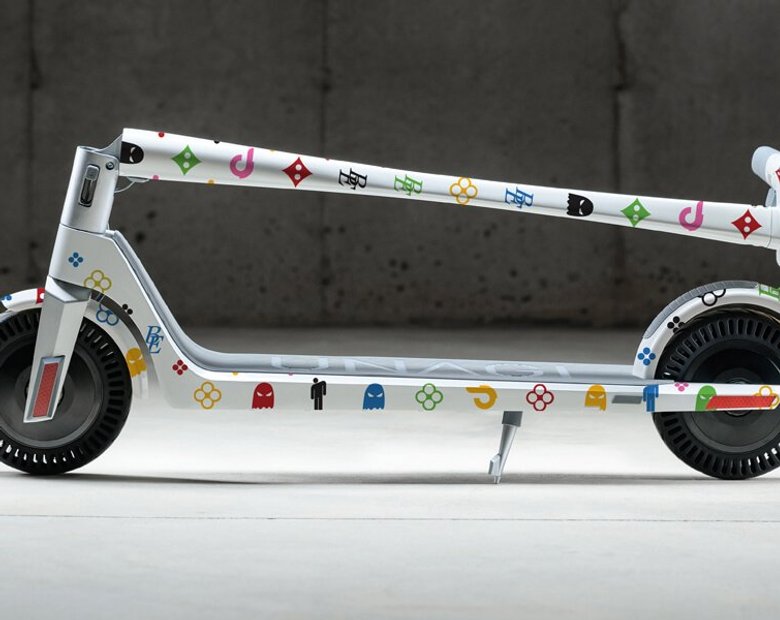Micromobility is here to stay, and it’s changing how we experience urban life for the better. With Unagi’s membership program, you can enjoy all the benefits of a top-tier electric scooter without the sky-high price of ownership or the inconvenience of ride-sharing.
There was a young man, sitting on the cement bank of a river, fishing for carp, and the wind rose around him. A voyeur might find himself compelled to question his state of awareness, but no amount of blinking or pinching or self-produlation could help to eject him from his afternoon reverie. The Jean-Francois Millet inflected pastoral, wrung-up and wrought with steel and concrete, bent and styled Rodinesque, and speckled impressionist, then post-impressionist, then surreal, is set, despite all scrutiny and inspection, in the heart of industrial Los Angeles.
Elysian Valley - dubbed Frogtown, in a wail of whimsy - is the jewel of North East LA. It is an amalgamation of art, nature, labor, and violence, a composite locality whose constituent attributes ebb and flow in grandeur, one pronouncing itself more haughtily than its brothers, from time to time, before being overcome by another. Its skies are blue and highway, assiduous at eye level, and muddy at its foot. And although the basin’s gangland history peppers its alleys and causeways with decades-old smoked saltpeter, beauty can be mined at every corner.
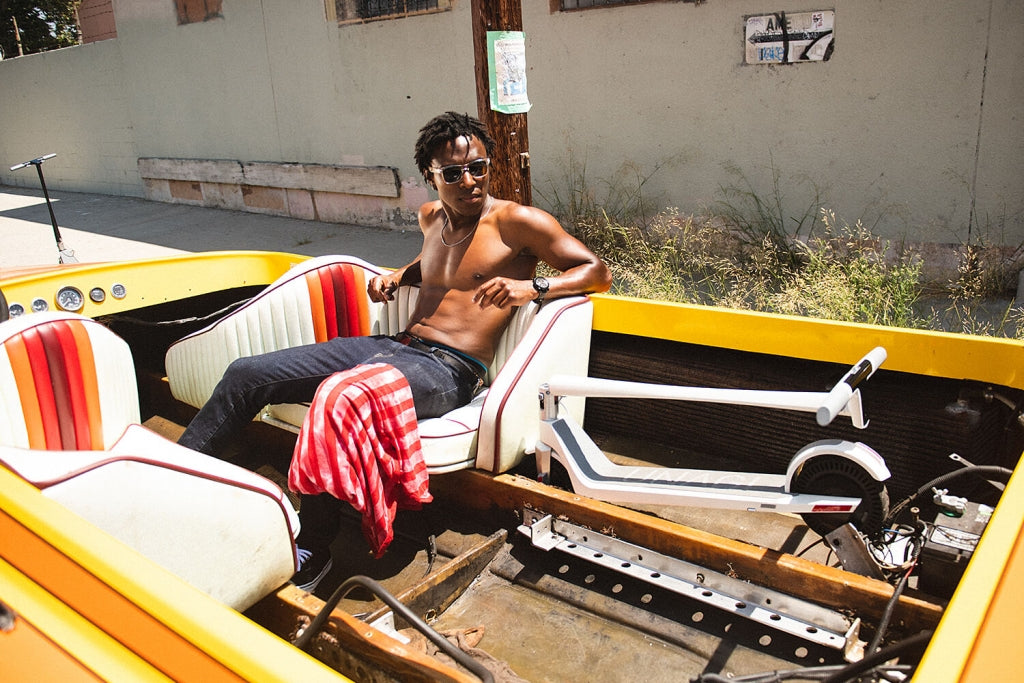
Given the amount of attention the neighborhood has captured over the past half-decade, it’s a bit surprising to find how many native Angelenos have yet to visit the urban island. 7,700 inhabitants strong, Frogtown is enclosed by three oppressive freeways (the 5, the 2, and the 110) to its west, south, and north, and an antithetical, verdant, teeming river to the east. While the brutalist, industrial trappings of the neighborhood’s legacy lend a subtle unsettling note to the community’s tableau, it is the river that strikes most jarring.
The Los Angeles River acted, seemingly for hundreds of years, as a source of food and water to the Tongva, a Native Peoples who inhabited the geographical area that would eventually become Elysian Valley and its neighboring localities. At the time of the arrival of the Spanish in 1769, there existed at least forty-five Tongva villages along the river in the immediate vicinity. One of the two Franciscan missionaries who first stumbled upon the river, Juan Crespi, came to name the waterway El Río de Nuestra Señora La Reina de Los Ángeles de Porciúncula, which translates to The River of Our Lady Queen of the Angels of Porciúncula.

The two hundred and fifty years between the time of the Franciscan discovery and present day has seen the Los Angeles River course down different paths, emptying in different locations, and altering the topography of its surroundings in response to a succession of major floods. After the monumental Los Angeles Flood of 1938, the Army Corps of Engineers encased the river’s bed and banks in concrete, contributing to a massive stemming of its historical flow. This man-made lining anchors the elemental struggles that characterize present day Elysian Valley, a vibrant ode to human discovery and assimilation.
The Tongva thrived off the flora and fauna that originated from the river, but the area’s breadth of wildlife has tapered with environmental, industrial, and demographic changes. The most notable missing residents are the frogs to which the community owes its moniker. Residents who grew up in Frogtown from the 1950s to the 1980s retain vivid memories of the amphibious swarms that would occupy the bike paths, streets, and sidewalks of their tight neighborhood. So great were the hordes of frogs in the middle of the 20th century that, supposedly, one could not ride his bike through Elysian Valley in the springtime without squishing a creature below.

Although the district’s croakers are widely considered its namesake, Angelenos also cite the violent Frogtown gang as dually responsible for the area’s designation. The Frogtown Rifas - also known as the Frogtown13 – are an American-Latino gang that has operated within the confines of Elysian Valley for decades. While the group’s origination date is not readily accessible, rival gangs have sprung up and fought for dominance in the area and its surrounding communities since the 1930s. Although gentrification and the influx of a wave of notable artists – including Shepard Fairey – in the 1980s and 1990s have curtailed some of the violence in the region, Frogtown’s grit can still be felt sprayed through its stained cul-de-sacs.
Urban explorers – and electric scooter riders in particular – will find Elysian Valley’s relatively quiet streets and riverside bike path a joy to ride, and, although the frog’s have left, will also enjoy a resurgence of fish, plant, and vocal avian life due in large part to the rehabilitation efforts of the community’s population. Trash and waste removal efforts and the curtailing of pollution have contributed not only to an influx of winged and gilled new residents, but also to a new generation of young, creative denizens - the coffee shops, restaurants, and public arts to which they frequent constituting the focus of this article.
Unpack, unfold, ride, fold up, and ride again as you explore the latest form of this centuries old settlement. But remember, as you indulge in the modern trappings of this one-time woodland, to take a moment, sit by the river, and enjoy the reverie. Only here, in Frogtown, do herons sing, catfish jump, and, as your scooter powers down, does the wind rise.
Salazar

Begin your jaunt around Frogtown at the intersection of Fletcher and Ripple, home to the now famous Mexican eatery Salazar. While the crowds typically storm the outdoor restaurant on weekend nights – before stopping for drinks and live music at next-door Zebulon - you’ll find the weekday lunch atmosphere to border on serenity. Fold up and relax under an umbrella as you sip a slushed cocktail, devour a few tacos, and split a full Branzino with your riding buddies. For those of you with partners who also share your electric scooter passion, Salazar makes for more than an appropriate date spot, just make sure you don’t skip on the guacamole or sangria.
The Nooks and Crannies

Having eaten your fill, carve up Fletcher’s seemingly infinite number of cul-de-sacs as you scout out a wonderland of street art, found objects, half-open, semi-private art spaces, and film production studios. We don’t encourage you to barge in at 15 miles per hour, but, if something hanging outside a studio does catch your eye, give a polite knock and ask the resident artist if you might glean a better glimpse of the work-in-progress. You’ll find that, although dedicated and focused, the artist community of Elysian Valley is incredibly welcoming to outside enthusiasts. Among the famed artists who have taken studio space in the neighborhood, the life and work of Thomas Houseago is particularly tied to Frogtown. Hauseago’s massive sculptures originate at his reknown studio on Clearwater Street, and can be seen in exhibitions and galleries around the world.
Down By The River

Having indulged in the neighborhood’s human trappings, take a spin down marsh street, across the grass of its charming nature park, and emerge at the bike path that lines a vibrant stretch of the Los Angeles River. If you’re keen to test the limits of your Unagi, fold up, bend underneath the metal railing, and take your electric scooter for a sideways spin across the concrete sloping towards the waterway. A respite by the water is required to fully appreciate the misplaced natural wonderland, so leave your ride towards the top of the slope and make your way down to the riverbank. If you happen to visit on the weekend, you might encounter a few birdwatchers who will be happy to identify the varieties of fowl commanding Frogtown’s sky.
Spoke Bicycle Café

When you’ve finished admiring the natural tableau, climb back up the slope, remount your Unagi, and take a quick ride to the sliding doors of Spoke Bicycle Café. A perfect spot for a snack or an afternoon beverage, Spoke supplies both libations and velocipedes at the pleasure of Frogtown’s residents. A mainstay of the Elysian Valley revival, Spoke exists as one of the community’s main waterholes and points of congregation. Chat up some of the long time employees to get a sense of Elysian Valley’s transformation over the past two decades.
LaColombe

Keep gliding down the path until you hit the architecturally enticing LaColombe location and pop in for one of its inventive blends of nitro and cold brew coffee. While founded and headquartered in Philadelphia, LaColombe’s precision coffee brewing and inviting aesthetics make it an easy fit for Frogtown’s renaissance. Lounge on one of the outdoor benches and sip away on your iced refreshment as the occupying flock of sparrows chirps up a storm on top of the cafés hedge.
A Bit Further Down by the River

Hop back up the bike path and cruise the remaining accessible stretch of the river, keeping your eyes peeled for increasing avian varietals as the river grows more lush. The greenery sprouting from the islands at the center of the brook begin to take on a life of their own as the stream become heavier, lashing out wild towards the vast blue above. Towards path-end, one could imagine a time Frogtown appeared no less lush than Jurassic Park.
Wax Paper

You might still feel a bit stuffed from your feast at Salazar, but be sure to pop off the bike path midway between its end and the Marsh Street entrance to order a sandwich from Wax Paper to go. The incredibly well received and reviewed restaurant makes a limited amount of sandwiches each day based on the amount of fresh ingredients delivered by its high quality suppliers. If you’re a bit lucky, and the shop is yet to be sold out, wrap your hands around a Larry Mantle. The creation’s herbed bologna and assortment of pickled accessories make it more of an edible fashion statement than a traditional deli sandwich, but it’s a delicacy nonetheless.
Frogtown Brewery

As a final stop, ride by the Frogtown Brewery a few blocks up from Marsh Street and have a beer in its dimly lit, barebones headquarters. The brewery has been keeping Frogtown lubricated since 2016 and features some of the best of LA’s food trucks to accompany its daunting lineup of offerings. After you finish a glass of its “Kinky” blonde ale, take your electric scooter through the community’s side streets before emerging once more at the Salazar entrance to Los Angele’s most unique stomping ground.

Stay current with the latest U.S. electric scooter laws in our 2025 guide. Updated annually since our first comprehensive guide, ensuring you have the most recent state and city regulations to ride responsibly”
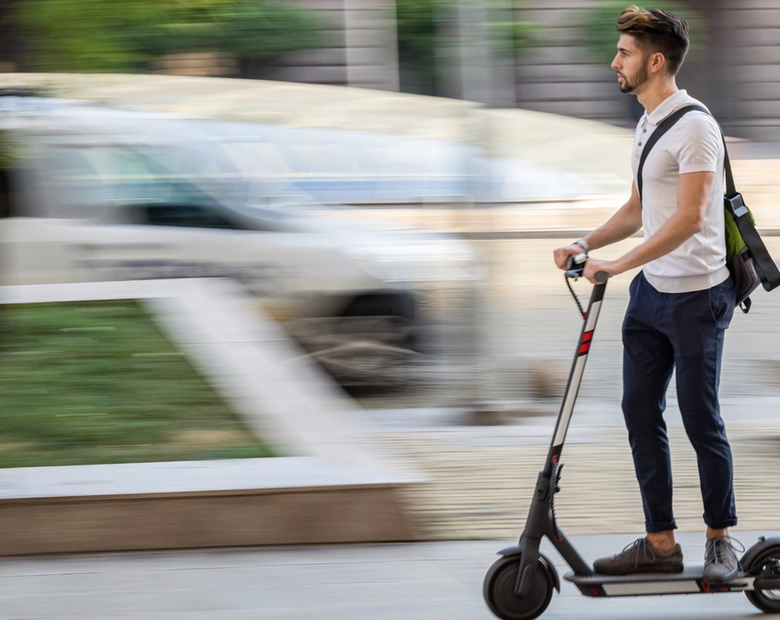
The Slack Core 920R is currently the fastest electric scooter in 2025 that you can purchase without the need for pre-order.
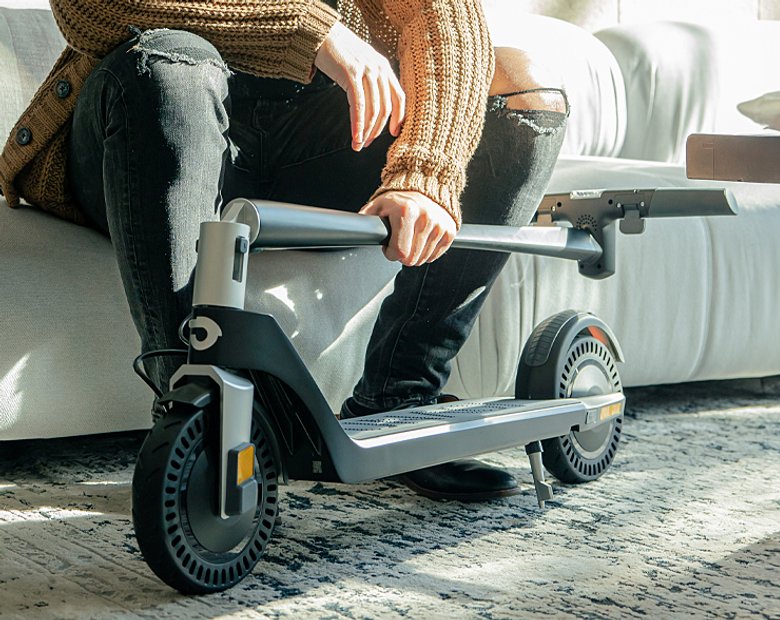
Our selection of the best electric scooters 2025 spans the fastest e-scooters to the most portable ones, the ones designed for city riding and off-road, the best scooters for rain, budget electric scooters for students, and more powerful ones for skilled riders.
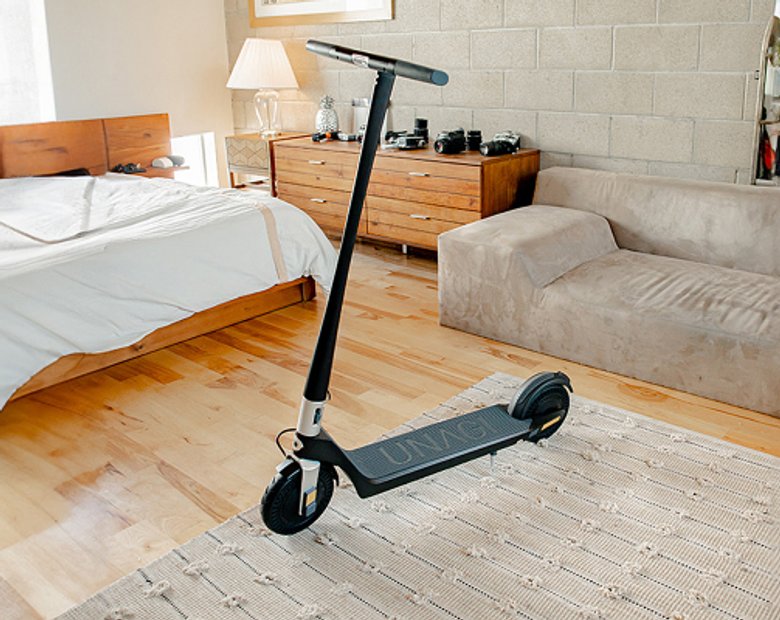
The Unagi Voyager is the best lightweight electric scooter for adults and teenagers. It is the ultraportable sequel to its predecessor, the Unagi Model One Classic.

If you're wondering whether an electric scooter with a seat is right for you, this is a detailed article that would suit your need.
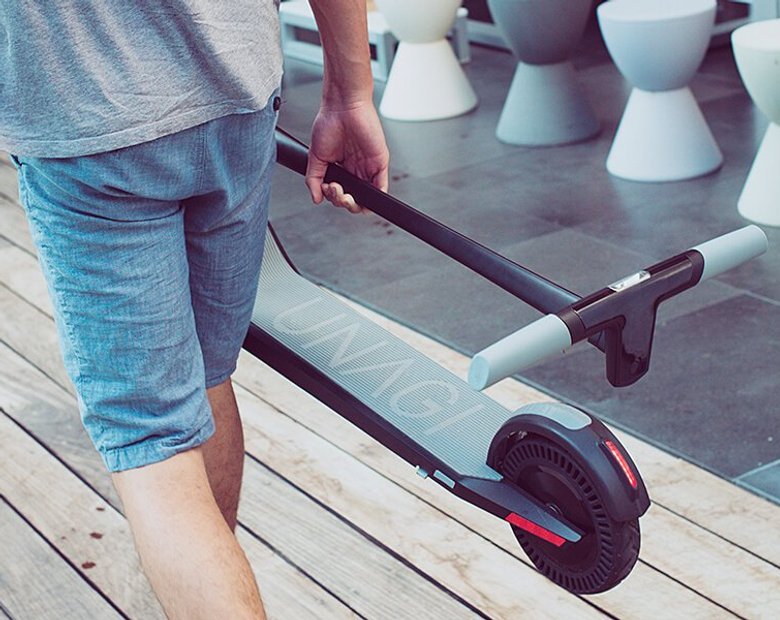
Understand which personal electric vehicle is best, the choice between an electric bike or electric scooter might already be made for you by some critical factors, including portability and storage capacity.
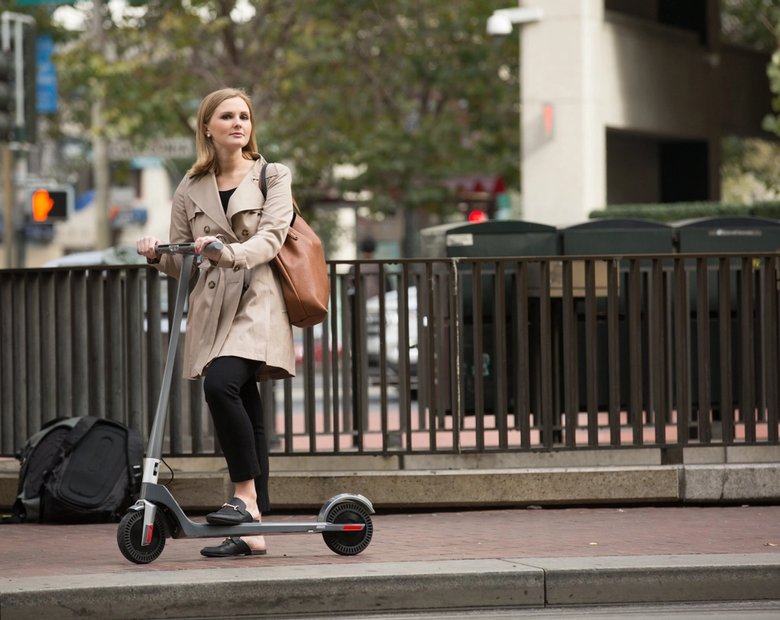
In the U.S., most states don't require a license. For those that do, they usually just ask for a regular driver's license or a learner's permit.
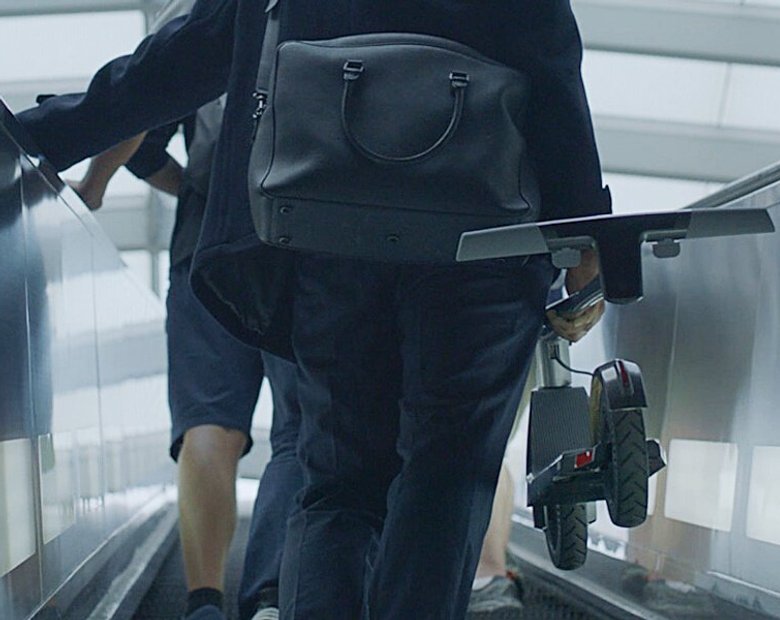
Yes, you can bring an electric scooter on a plane, but it needs to have a lithium battery smaller than 100 watt-hours, which most don't.

Manufacturers advise against riding electric scooters in the rain. The main reasons are: water can fry the electronics, make the ride dangerous, and void your warranty.

The basis and the premise of my work is that we either operate out of love or we operate out of fear...Time is currency. The coolest thing about the scooters is that it's really quick, and it goes uphill. From there, traveling more efficiently and having a good time doing it--I think that's the most important thing.

Cynthia Leu has a full plate. A tech worker by day, Cynthia spends her off time balancing the parallel lives of a powerlifter, entrepreneur, mental health advocate, and more. Riding Unagi helps this USMC veteran cut down on everyday…
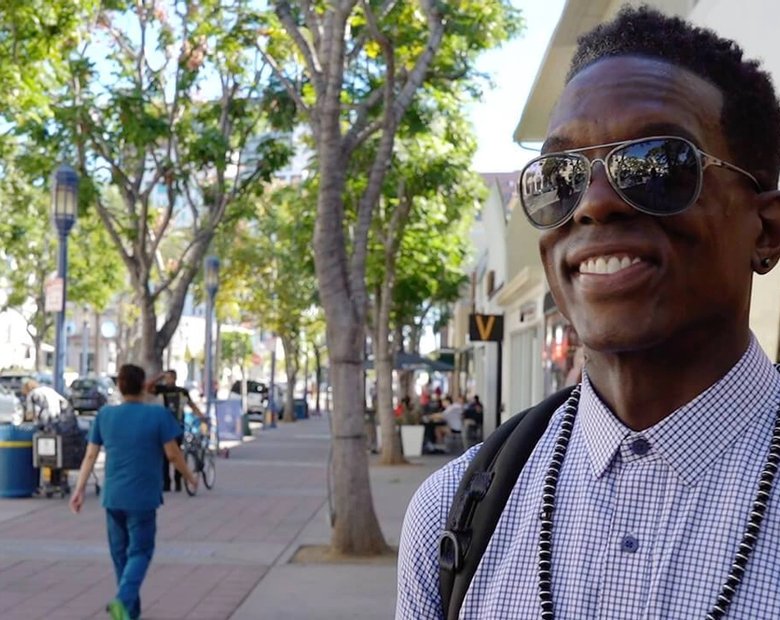
https://www.youtube.com/watch?v=7m2hVBE62LY Rasheed Muhammad is sick of Los Angeles traffic. In order to preserve his sanity, Rasheed has traded his everyday driving habit for the portable and beautiful Unagi Model One. It’s an essential accessory for navigating LA streets -- and…

Rich Lee, Co-Founder of San Francisco’s SPRO Coffee Lab, wants to share his love for coffee with the world. He depends on riding Unagi to avoid the hassle of navigating the parking crunch in the booming Mission Bay neighborhood.…


